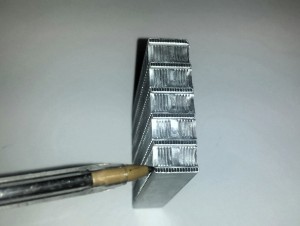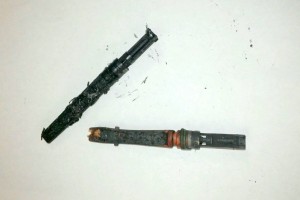By: Caroline Acebedo
Anytime we see a compressor failure that has filled the system with debris, we flush the system. However, if the system is full of metal fragments and debris, flushing might not be enough. If system has a newer, parallel flow (R-134a) condenser, or a micro tube condenser it may have to be replaced to ensure that the system is clean.
If you are working with a tube and fin or serpentine condenser, you can effectively flush the condenser. If you are working with a parallel flow condenser, it is a different story entirely. While the multi-flow/parallel flow condensers are more efficient than the old tube style condensers, they cannot be effectively flushed! The passages in the parallel flow condensers run back and forth across the core several times. Micro Tube condenser passages are smaller than the tip of a pen plus they are parallel flow. Because these passages are so small, it is impossible to remove contaminants from the system.
If the condenser is not replaced and remains clogged with debris it can cause high head pressures and/or lack of cooling. If the system continues to run with high pressure, it can cause excessive wear on the compressor and ultimately lead to compressor failure.
Although it makes a repair more costly to replace the condenser, it pays off to complete the job correctly the first time!


